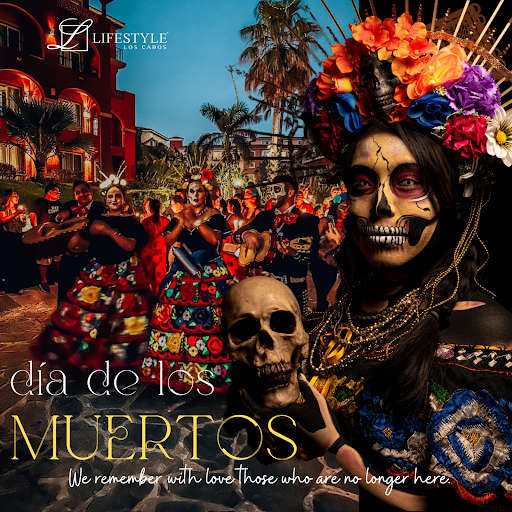DAY OF THE DEAD AND THANKSGIVING
“It only dies when she forgets, and I never forget you.” This beautiful phrase expressed in the movie COCO (Disney) is one of the purest feelings towards those who are no longer with us, which shows one of the most beautiful and significant celebrations of the culture of Mexico.

DAY OF THE DEAD They are one of those traditional holidays you must experience once to understand a different meaning of death; it is a beautiful experience.
The Mexican cities are filled with altars, offerings, and catrinas, each region with particularity and tradition, but all united in remembering their dead.
It is one of the oldest festivities, for more than five hundred years; with the union of pre-Hispanic culture, these cults began to be carried out that give meaning to life after death. In indigenous culture, souls returned to visit their loved ones to share food and remember their time together through anecdotes. They used marigold flowers to illuminate their path, incense such as copal, and different offerings to remember the deceased.
This cult of death was one of the keys to their culture. When someone died, they wrapped them in a mat and celebrated to guide them on their journey to Mictlán. For these cultures, death only meant part of a cycle, and its destiny was marked by the way of life the deceased had.
After the arrival of the Spanish, the culture of the indigenous people began to merge with the Catholics. Other elements started to be added, such as candles, the bread of the dead (made with more refined flours), the crosses that are so significant for Catholicism, and also some distilled beverages that were brought from Europe.
Another symbol that cannot be missing in the celebrations and that must not be forgotten since they are one of the most representative both within Mexico and abroad are the “calaveritas,” where the Catrinas, born at the end of the 19th century, emerge.
On festival days, the streets are filled with colors, there are dances, people paint themselves as catrinas, there are visits to the cemeteries with bands where families also decorate the tombs in a very festive way, and there is a real party to receive the souls of our loved ones.
The altars are usually placed on the last days of October until November 2.
On November 1, All Saints’ Day is celebrated; according to Catholic tradition, it remembers those who died without being saints and those who died at an early age, children. On November 2, the Faithful Departed, that is, adults, are celebrated, and a prayer is made for those who have not entered paradise.
How are altars set up, and what should they include?
Each family makes the altars according to their preferences; the design is very personal.
It is common to see that altars are also prepared in workplaces, schools, public and private institutions.
Although they carry many traditional objects, others are typical of the deceased who is remembered.
Some of them are:
Salt and White Tablecloth: The color represents purity, and salt is the main element of purification so that the deceased’s body is not corrupted and can transit between this world and that of the dead.
Water: It symbolizes purity; it softens the silk of the souls after its long journey.
Candles: The flame symbolizes the guide for the dead to find their way back to their old home.
Skulls: Whether made of sugar or chocolate, they represent death according to the tradition of Mesoamerican cultures. They allude to that pre-Hispanic tradition.
Copal and Incense: Fragrances of reverence are used to cleanse the place of evil spirits so that the soul can enter your home without any danger.
Flowers: They decorate and aromatize the place during the soul’s stay; the Cempasúchil flower is the symbol of the festival; our ancestors assimilated the yellow color of the flower with the Sun, tradition marks making paths with the Cempasúchil flowers from the main path to the altar of the house to guide the souls to the altars.
Bread of the Dead: It is one of the most precious elements on the altar, which means affection towards loved ones who have passed away.
Confetti: This element gives color and joy to the offering; it represents air as one of the four elements that must always be present.
Meal: It is to delight the dead who visit the offering; it is cooked in honor of the remembered beings, and it is customary to put their favorite food and drink.
Portrait: The photograph of the loved one means that she or he will be the one who will visit the ofrenda.
The altar has seven levels; each step represents the levels the deceased souls must advance to rest in peace.
THANKSGIVING DAY

This ancient celebration dates back to the year 1621. In the fall of that year, after obtaining an excellent harvest, Governor Bradford dedicated a day to thank God after being blessed with a successful harvest.
This date has significant meaning for the people of the United States since the meeting and reunion with family and friends entails gratitude for everything achieved during the year, that is, for the excellent and abundant harvests, thanking God for the blessings received.
Usually, it is celebrated on the fourth Thursday of November. This was established on October 3, 1863, by President Abraham Lincoln proclaiming about this important holiday. The way of celebrating Thanksgiving has been preserved since the 20th century.
The most notable tradition is to dine on stuffed turkey; the side dishes are usually mashed potatoes, potato and vegetable salads, asparagus, and cranberry sauces. The traditional dessert present on these dates is apple and pumpkin pie.
Although each family has its traditions and preferences when gathering at the Thanksgiving table, it is also true that the culture of typical flavors represents this great family event.
Giving thanks for everything achieved in our lives should be a very representative event not only on these dates but on each of our days.
Being able to understand the idiosyncrasy of celebrations that are so allusive to such ancient traditions and that continue to be celebrated today is a demonstration of the need for human beings to feel close to those they love and find there the true and pure love that we all need. Family and friends represent our essence, and sharing moments with them is the simplest way to feel complete and accompanied.
LIFESTYLE is a great family that will always receive you with open arms every time you decide to come to Los Cabos to celebrate these allusive and commemorative celebrations. Having everything ready so that you can get together as a family and enjoy life itself is our specialty.
Feel lucky to celebrate with those you love most the blessing of being united.
